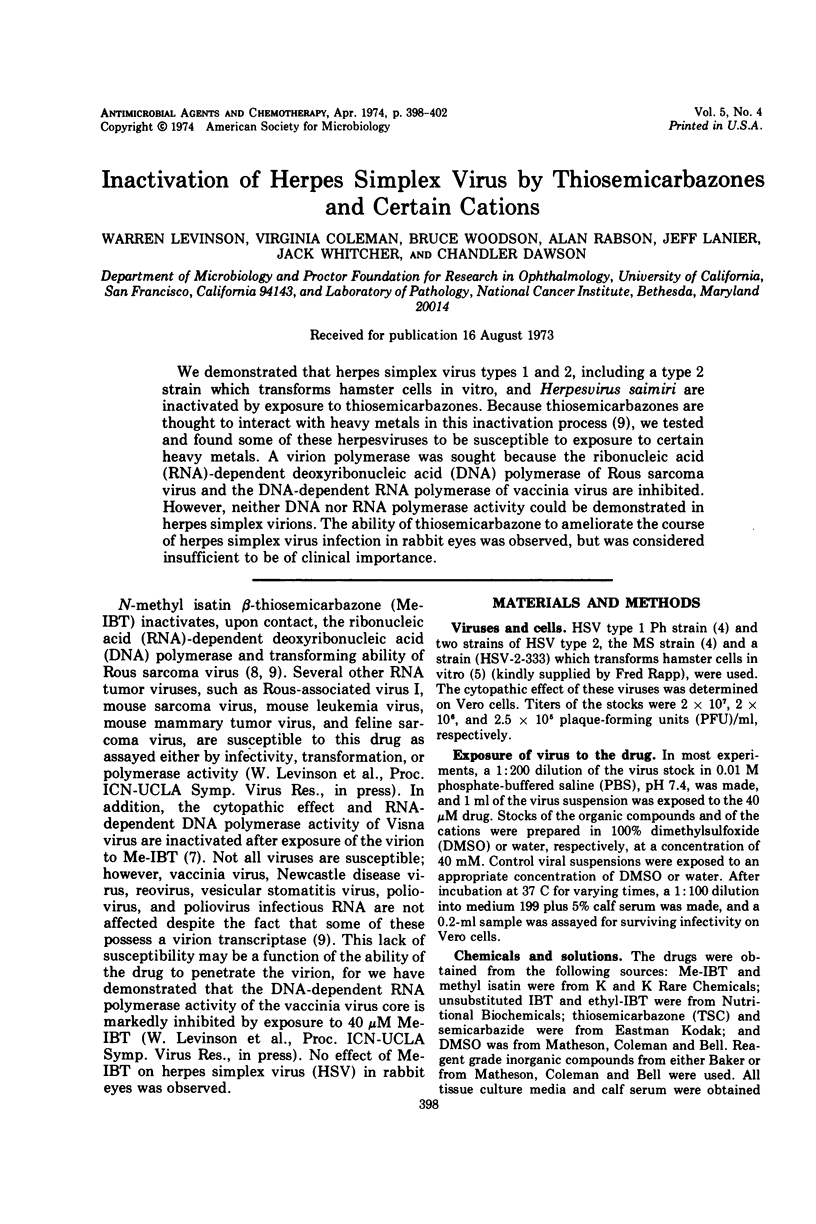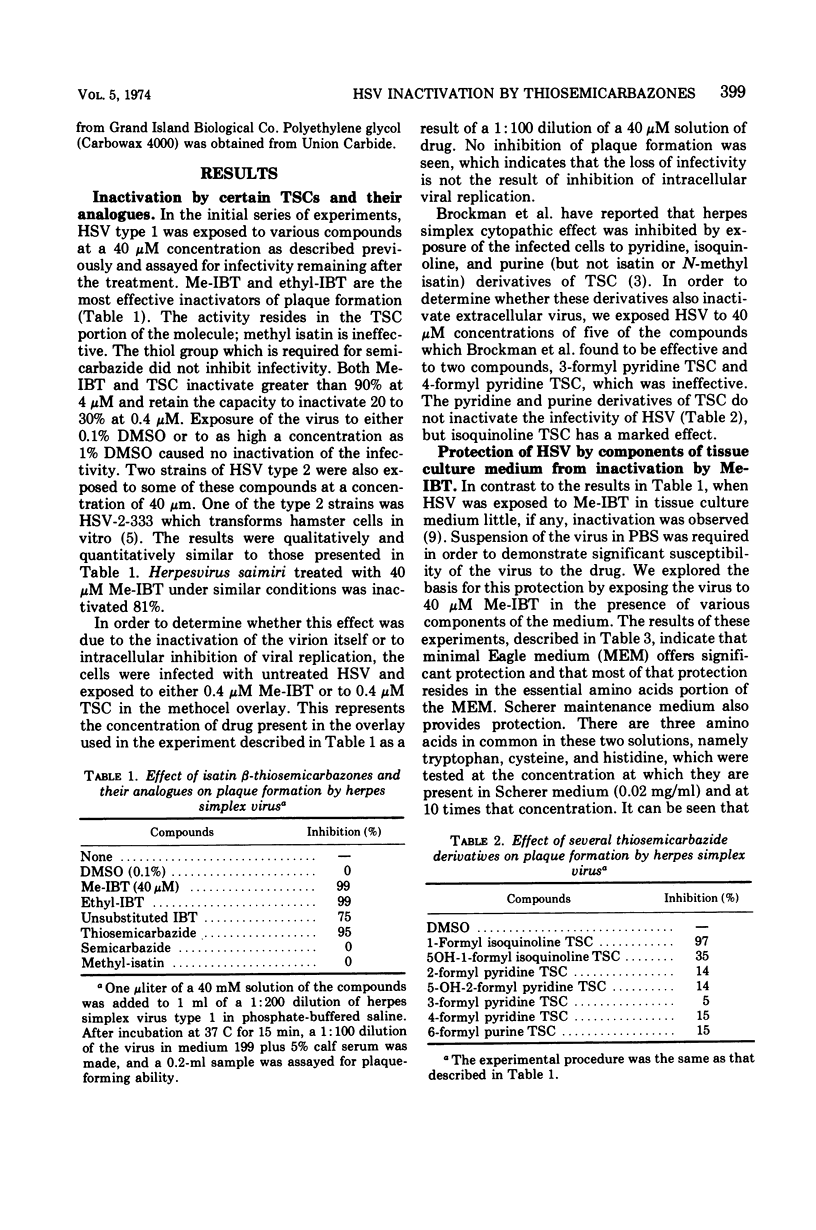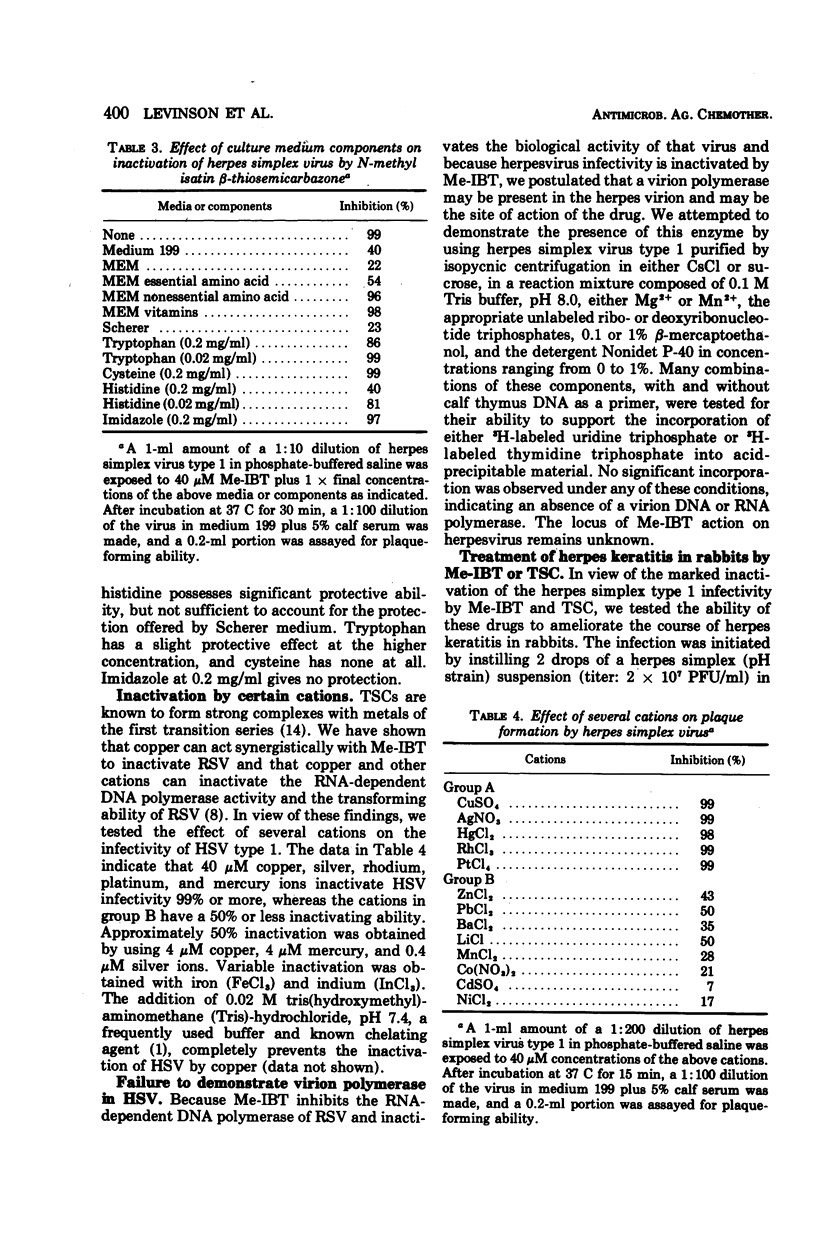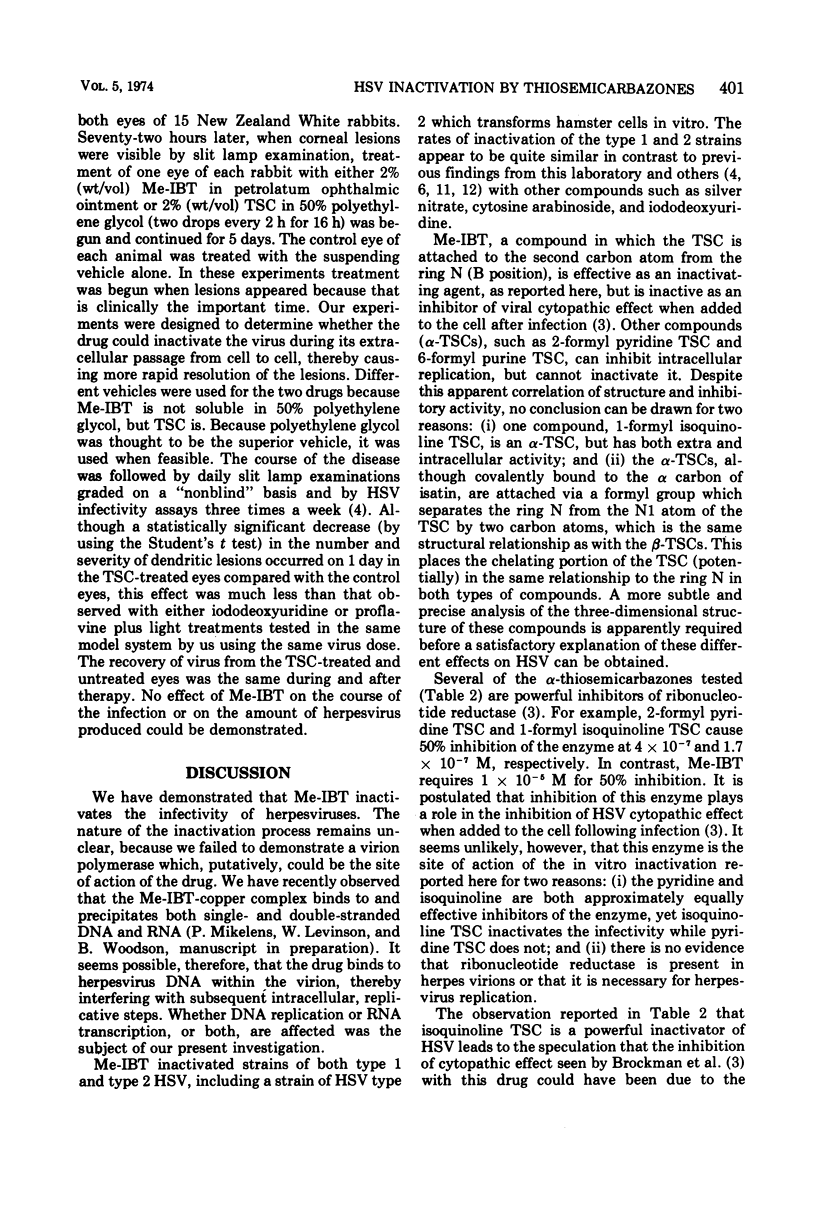Abstract
We demonstrated that herpes simplex virus types 1 and 2, including a type 2 strain which transforms hamster cells in vitro, and Herpesvirus saimiri are inactivated by exposure to thiosemicarbazones. Because thiosemicarbazones are thought to interact with heavy metals in this inactivation process (9), we tested and found some of these herpesviruses to be susceptible to exposure to certain heavy metals. A virion polymerase was sought because the ribonucleic acid (RNA)-dependent deoxyribonucleic acid (DNA) polymerase of Rous sarcoma virus and the DNA-dependent RNA polymerase of vaccinia virus are inhibited. However, neither DNA nor RNA polymerase activity could be demonstrated in herpes simplex virions. The ability of thiosemicarbazone to ameliorate the course of herpes simplex virus infection in rabbit eyes was observed, but was considered insufficient to be of clinical importance.
Full text
PDF




Selected References
These references are in PubMed. This may not be the complete list of references from this article.
- Brockman R. W., Sidwell R. W., Arnett G., Shaddix S. Heterocyclic thiosemicarbazones: correlation between structure, inhibition of ribonucleotide reductase, and inhibition of DNA viruses. Proc Soc Exp Biol Med. 1970 Feb;133(2):609–614. doi: 10.3181/00379727-133-34528. [DOI] [PubMed] [Google Scholar]
- Coleman V. R., Wilkie J., Levinson W. E., Stevens T., Jawetz E. Inactivation of Herpesvirus hominis types 1 and 2 by silver nitrate in vitro and in vivo. Antimicrob Agents Chemother. 1973 Sep;4(3):259–262. doi: 10.1128/aac.4.3.259. [DOI] [PMC free article] [PubMed] [Google Scholar]
- Duff R., Rapp F. Oncogenic transformation of hamster cells after exposure to herpes simplex virus type 2. Nat New Biol. 1971 Sep 8;233(36):48–50. doi: 10.1038/newbio233048a0. [DOI] [PubMed] [Google Scholar]
- Fiala M., Chow A., Guze L. B. Susceptibility of herpesviruses to cytosine arabinoside: standardization of susceptibility test procedure and relative resistance of herpes simplex type 2 strains. Antimicrob Agents Chemother. 1972 Apr;1(4):354–357. doi: 10.1128/aac.1.4.354. [DOI] [PMC free article] [PubMed] [Google Scholar]
- Haase A. T., Levinson W. Inhibition of RNA slow viruses by thiosemicarbazones. Biochem Biophys Res Commun. 1973 Apr 16;51(4):875–880. doi: 10.1016/0006-291x(73)90008-9. [DOI] [PubMed] [Google Scholar]
- Levinson W., Faras A., Woodson B., Jackson J., Bishop J. M. Inhibition of RNA-dependent DNA polymerase of Rous sarcoma virus by thiosemicarbazones and several cations. Proc Natl Acad Sci U S A. 1973 Jan;70(1):164–168. doi: 10.1073/pnas.70.1.164. [DOI] [PMC free article] [PubMed] [Google Scholar]
- Levinson W., Woodson B., Jackson J. Inactivation of Rous sarcoma virus on contact with N-ethyl isatin -thiosemicarbazone. Nat New Biol. 1971 Jul 28;232(30):116–118. doi: 10.1038/newbio232116a0. [DOI] [PubMed] [Google Scholar]
- Person D. A., Sheridan P. J., Herrmann E. C. Sensitivity of Types 1 and 2 Herpes Simplex Virus to 5-Iodo-2'-Deoxyuridine and 9-beta-d-Arabinofuranosyladenine. Infect Immun. 1970 Dec;2(6):815–820. doi: 10.1128/iai.2.6.815-820.1970. [DOI] [PMC free article] [PubMed] [Google Scholar]
- Plummer G., Waner J. L., Phuangsab A., Goodheart C. R. Type 1 and type 2 herpes simplex viruses: serological and biological differences. J Virol. 1970 Jan;5(1):51–59. doi: 10.1128/jvi.5.1.51-59.1970. [DOI] [PMC free article] [PubMed] [Google Scholar]
- SERY T. W., FURGIUELE F. P. The inactivation of herpessimplex virus by chemical agents. Am J Ophthalmol. 1961 Jan;51:42–57. doi: 10.1016/0002-9394(61)91310-1. [DOI] [PubMed] [Google Scholar]
- Taylor M. R., Gabe E. J., Glusker J. P., Minkin J. A., Patterson A. L. The crystal structures of compounds with antitumor activity. 2-keto-3-ethoxybutyraldehyde bis(thiosemicarbazone) and its cupric complex. J Am Chem Soc. 1966 Apr 20;88(8):1845–1846. doi: 10.1021/ja00960a067. [DOI] [PubMed] [Google Scholar]
- WALLIS C., YANG C. S., MELNICK J. L. Effect of cations on thermal inactivation of vaccinia, herpes simplex, and adenoviruses. J Immunol. 1962 Jul;89:41–46. [PubMed] [Google Scholar]


